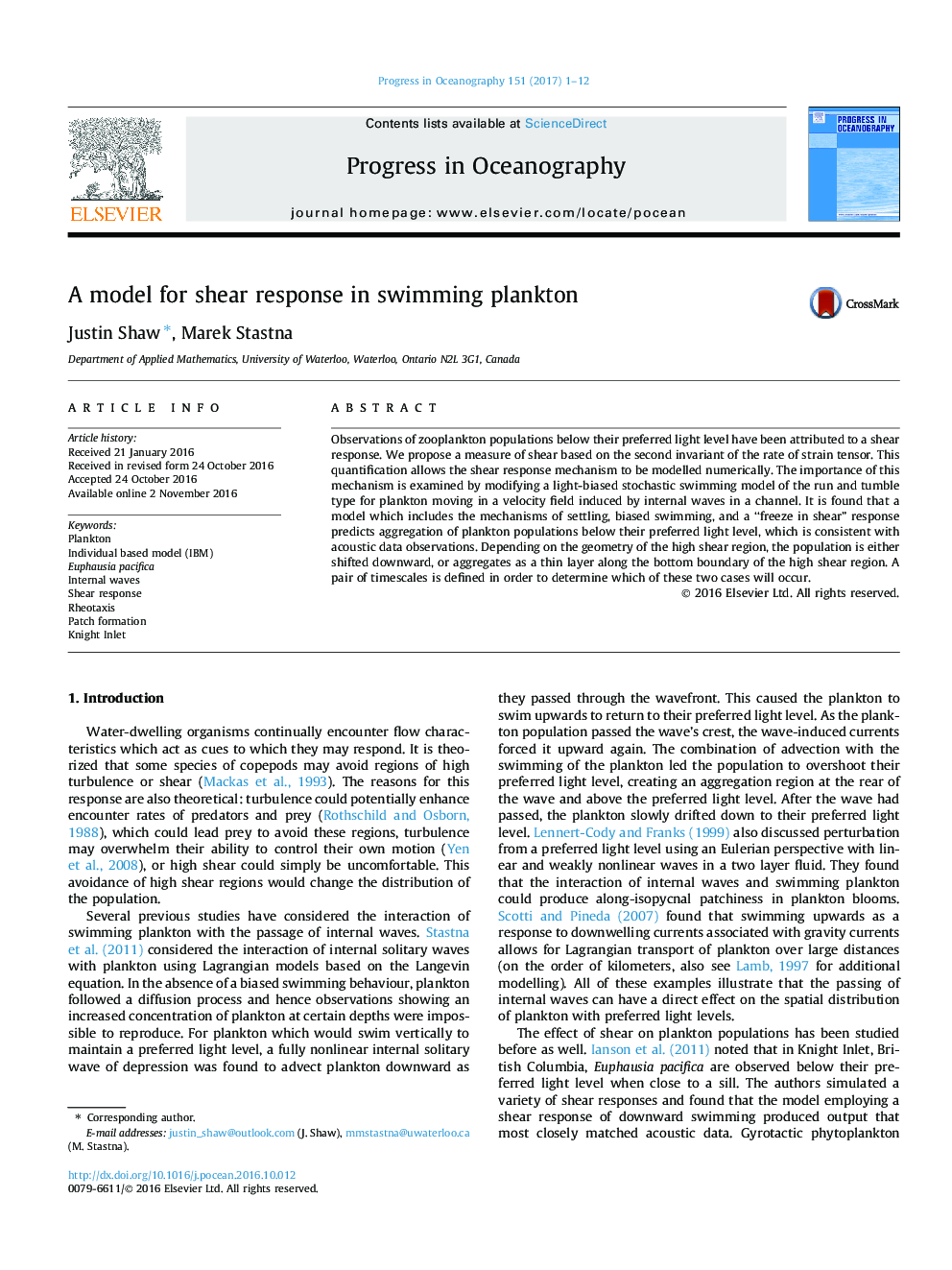| Article ID | Journal | Published Year | Pages | File Type |
|---|---|---|---|---|
| 5766512 | Progress in Oceanography | 2017 | 12 Pages |
â¢A measure of shear based on the second invariant of the rate of strain tensor is proposed to quantify the shear response mechanism of some swimming zooplankton.â¢An individual based model is constructed to investigate the importance of the shear response mechanism to the population dynamics.â¢The model predicts aggregation of plankton populations below their preferred light level.â¢The population is either shifted downward or aggregates as a thin layer along the bottom boundary of the high shear region.
Observations of zooplankton populations below their preferred light level have been attributed to a shear response. We propose a measure of shear based on the second invariant of the rate of strain tensor. This quantification allows the shear response mechanism to be modelled numerically. The importance of this mechanism is examined by modifying a light-biased stochastic swimming model of the run and tumble type for plankton moving in a velocity field induced by internal waves in a channel. It is found that a model which includes the mechanisms of settling, biased swimming, and a “freeze in shear” response predicts aggregation of plankton populations below their preferred light level, which is consistent with acoustic data observations. Depending on the geometry of the high shear region, the population is either shifted downward, or aggregates as a thin layer along the bottom boundary of the high shear region. A pair of timescales is defined in order to determine which of these two cases will occur.
